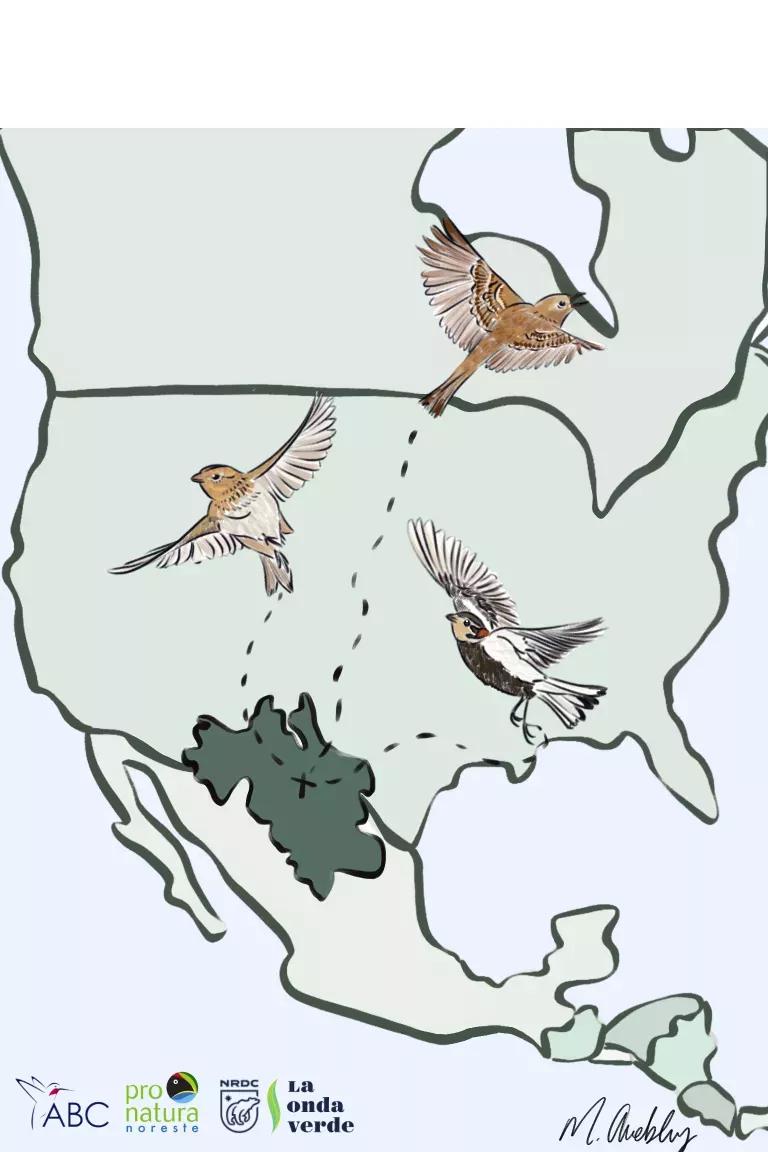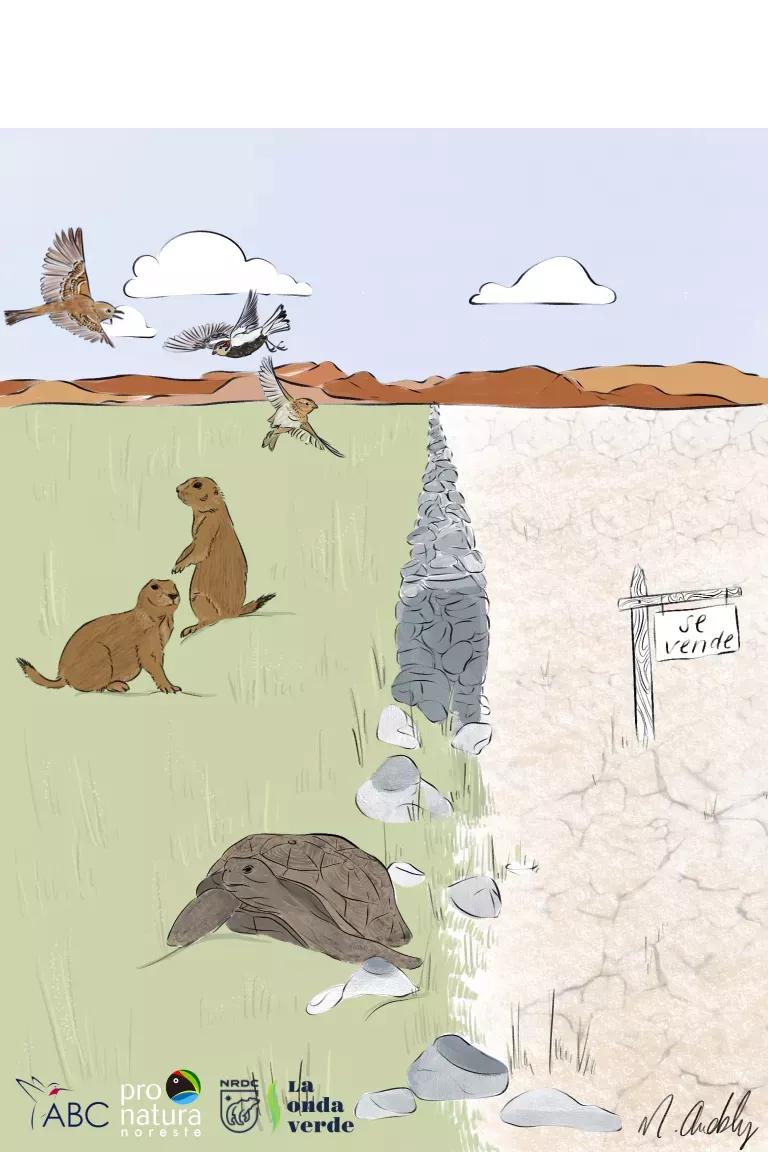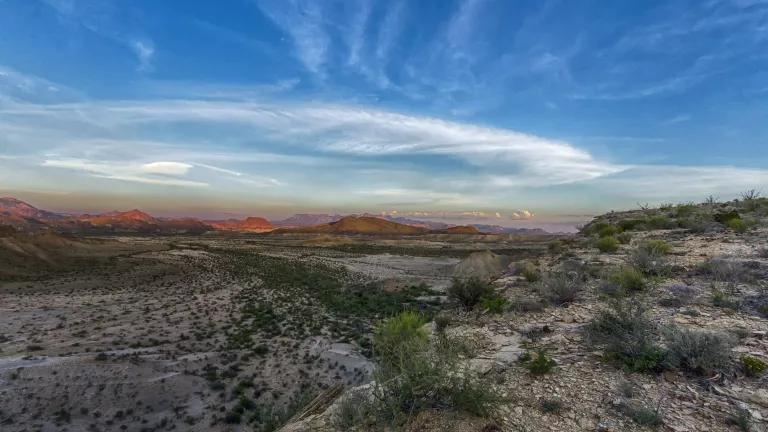Life in the Chihuahuan Desert Grasslands
90 percent of the grassland bird species that breed on the Great Plains in the United States and Canada winter in the grasslands of the Chihuahuan Desert, which encompasses the northwestern region of Mexico, spreading into the states of Arizona, New Mexico and Texas.

Chihuahuan Desert migratory birds
Madeleine Audsley
This blog was co-written with Andrea Becerra, Andrés Anchondo of ABC, and Diana González Aguilar and Diana Laura Sanchez Hernandez of Pronatura Noreste
The Chihuahuan Desert, the largest in North America, is home to some of the most biodiverse grasslands in the world, including 500 species of birds. 90 percent of the grassland bird species that breed on the Great Plains in the United States and Canada winter in the grasslands of the Chihuahuan Desert, which encompasses the northwestern region of Mexico, spreading into the states of Arizona, New Mexico and Texas. During April and May, North American grassland migratory birds such as the Baird's Sparrow, the Chestnut-collared Longspur, and the Sprague’s pipit (Image 1) travel hundreds of kilometers from their winter habitat in the Chihuahuan Desert to their breeding grounds in the Great Plains.
Protecting the Chihuahuan Desert is critical for the conservation of the complete life cycle of these migratory birds. Climate change, unsustainable water use and poor grazing practices have contributed to grassland degradation. Experts estimate that, if these threats are allowed to continue, the grasslands of the state of Chihuahua could disappear by 2025. Despite being one of the most important ecosystems in North America, the territory for these birds is disappearing at an alarming rate.
Projected growth in oil, gas and wind energy production could further degrade the vital environmental services provided by this region, particularly as a nature-based solution for soil carbon storage. Grasslands store 10-30 percent of the world's soil carbon, compared to grasslands converted to intensive agriculture that release this greenhouse gas from the soil, increasing air pollution and accelerating climate change. Despite its scarcity, water is increasingly overexploited from aquifers as grasslands become intensive cultivation fields.
Animals like the Bolson tortoise and the Mexican prairie dog, both endangered and endemic species of the region, are key to the ecosystem that they cohabit with migratory grassland birds. The Bolson tortoise lives in a small area of Bolson de Mapimí in the Chihuahuan Desert of Mexico. The Mapimí Biosphere Reserve was created to protect this species, but much of the land is still used for agricultural development and ranching, threatening the turtle's habitat. Prairie dogs also face the threat of agricultural development and overgrazing. Beyond just being adorable, the digging habits of prairie dogs (a keystone species) renew the soil, increase oxygen levels and improve infiltration, which helps restore aquifers. That is why they are recognized as the "landscapers of the grasslands."
Preventing and putting an end to all of the threats that endanger the species and grasslands of the Chihuahuan Desert requires various complementary solutions. Some solutions include restoring degraded areas, and implementing sustainable strategies for water management and livestock practices. American Bird Conservancy, Pronatura Noreste, and NRDC are working together to promote solutions that conserve grasslands and everything that goes into a healthy territory: biodiversity, cultural value, and the economic livelihood of the area.
To learn more about the Chihuahuan grasslands, take a look at our story map and follow #EnArmoníaConLosPastizales on Twitter, Facebook, and Instagram. Also be sure to check out our partners’ work, including this video on the importance of grassland species preservation from Pronatura Noreste and a blog from ABC.





